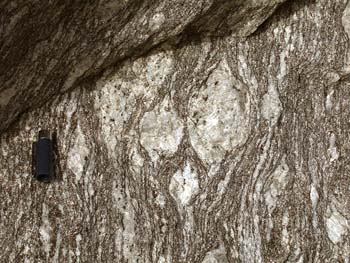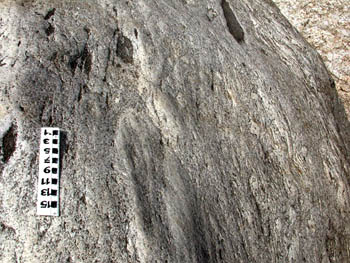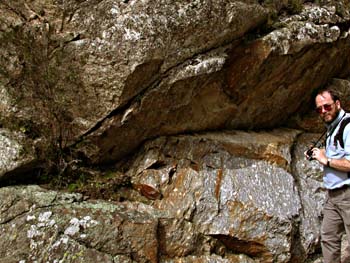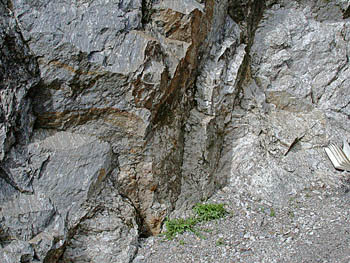|
Click on a picture
to see a full screen version
|
|
Yet more augen!
Here the augen are found not only
low down in the stream bed, but also higher up at the roadside.
They have also become more frequent. This change in elevation reflects
the fact that as we progress further up the valley, we are deeper
within the gneissic dome and further down in the sequence of strata
|

|
|
A group of augen
|
| |

|
| a stretched lineation
which may indicate that this rock has been subjected to shear |
| |
| In some locations
the foliation is stretched out, a rock texture which is formed by
shear, a sliding movement which causes the crystals to be stretched
and recrystallised into smaller flatter ones. The direction of the
linear crystals lie in the direction of movement. |
|
 |
| A well known geologist introduces
us to where we can see a well exposed rock face with many augen |
| |
|
Size, shape and orientation The
augen occur both singly and in groups, as seen on the left. They
range in size up to 12 cm x 8 cm. The long axis of the lozenge shape
follows the direction of the compositional banding, which at this
location is fairly planar, Elsewhere it is variously folded and
a convoluted and disordered pattern.
|
 |
| Smaller and fewer augen here.
This photo was taken quite close to the others on this page. This
reflects the variability of the density of augen (porphyroblasts). |
| |
|
